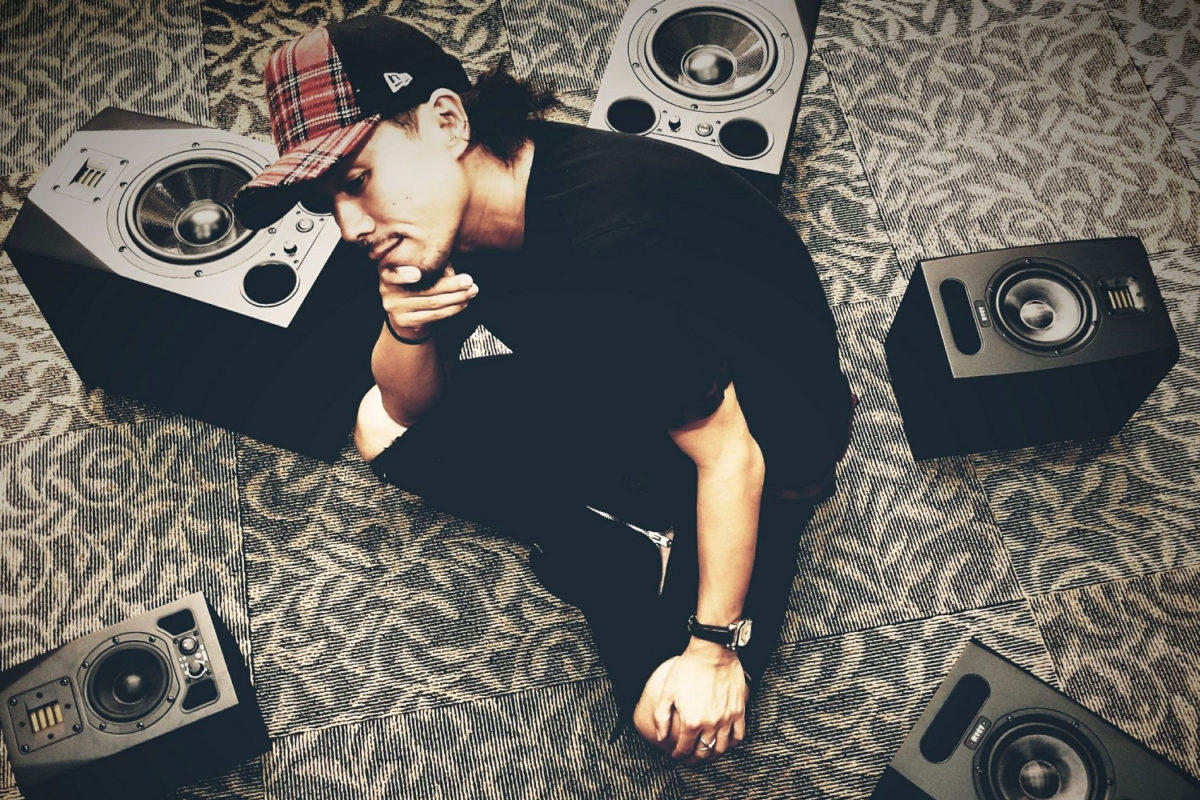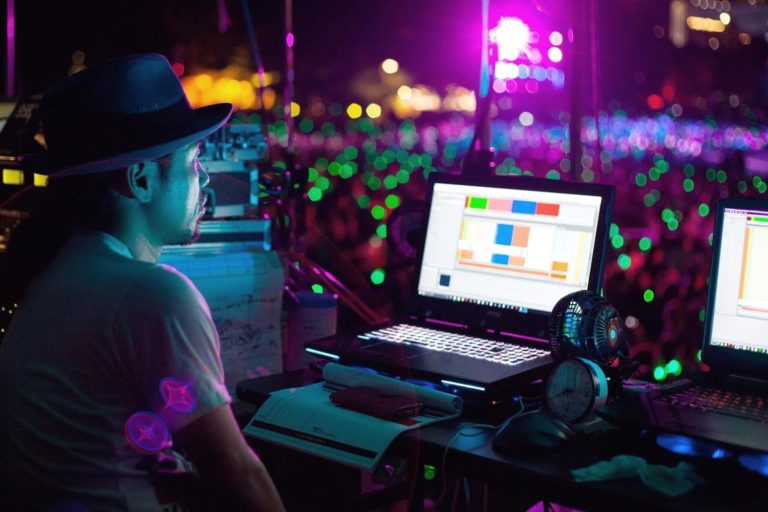Katsuyuki Seto’s 3D Sound SpacesCrafting Next-Generation Surround Audio For Retail Environments
ADAM Users
One of Japan’s leading creators of surround soundscapes for retail venues, katsuyuki seto has explored multi-channel audio in ways that have taken him far beyond the conventional surround sound concepts normally associated with cinema.
His calls his unique approach “3D Sound Space”. He founded the Studio Space Lab in Tokyo in 2002, a facility focused on multi-channel audio which has served as the laboratory for his many successful ventures. His business designs, develops and realizes audio for retail and commercial environments such as large department stores, shopping malls and restaurants, to name but a few.
Exemplary for his special talents was a recent portfolio of work at Sunshine City, a glittering, high-tech multi-purpose entertainment complex in Tokyo’s Toshima ward. Its four buildings house the Sunshine 60 skyscraper, a museum, an aquarium, the World Import Mart culinary emporium, a planetarium, a hotel, a theatre and a shopping mall. katsuyuki seto was called in to design new surround soundscapes for various areas within the complex. These included intricately tailored 3D mixes for locations such as the ladies’ restroom and baby feeding room, while another set-up was designed to ameliorate negative responses to a VR installation on the roof. Other venues for Mr Seto’s innovative installations have included a flagship store for leading sneaker brand New Balance, where his detailed research helped build a 3D Sound Space that lets shoppers feel as though they are doing the sports depicted in the various areas and floors. His sound design for the “Daishokudo” restaurant in Tokyo’s up-market Ginsa Six area uses audio streams with subtle, natural sounds that reflect the source environments for the dishes on offer.
Not only does he mix using ADAM Audio monitors, his business also installs ADAM Audio speakers into the retail facilities. The reason for eschewing standard speakers commonly found in retail spaces is that his installations often require carefully attenuated, finely nuanced audio designed to produce a pleasing effect that is not immediately obvious to the consumer. “When we want to express such delicate details, ADAM Audio speakers are the best,” he told us during a recent interview. “The crossing over of the sound between the floors is something which cannot be done using other ordinary speakers. The sound characteristics of the ADAM Audio monitors are really good for this kind of application.”
“The sound comes out just like I have imagined it, so I can work very efficiently. If you want to create a good acoustic space, it is necessary to use a dedicated speaker that is designed with sound quality in mind.”
To deliver finely nuanced material that enhances the experience of shoppers and consumers, he records audio sources in DSD, which is later down-converted to 24-bit/96 kHz. “I can say that there are not many speakers which can properly reproduce the sound material of that quality, and the ADAMs enable me to reproduce that high-resolution sound. The sound comes out just like I have imagined it, so I can work very efficiently. If you want to create a good acoustic space, it is necessary to use a dedicated speaker that is designed with sound quality in mind. Otherwise, you cannot create a good-sounding space. This is when we install the ADAM speakers.”
Mr Seto’s sound installations feature ADAM Audio speakers of various sizes, depending on the demands of the task at hand. His first contact with ADAM Audio monitors was 17 years ago at Japan’s InterBEE broadcast technology exhibition. “I heard many people praising the sound quality,” he remembers. “When I first used them, the mixing of the vocals was very easy to do with them. I especially liked the natural low-end and the excellent separation of the sounds. I demoed the S3As and several other models in my own studio, and although I liked them very much, I was not able to afford them as I had no extra cash to spend in those days,” he laughs. “Since then, I always thought that gear by ADAM Audio was what I definitely wanted to purchase in the future, for my pursuit of the perfect sound. Comparing with the monitor I used at that time, there was a clear difference in the sound reproduction especially when used in surround setup. I remember how beautiful the 3D movement of the sound was, when using the ADAMs for mixing multi-channel content.”
“I remember how beautiful the 3D movement of the sound was, when using the ADAMs for mixing multi-channel content.”
As an audio professional working with shopping and retail environments, he often dispenses with traditional barriers and ways of thinking that keep the studio world isolated from applications such as retail. “My clients are mainly commercial facilities, but I am not so stuck with the classification ‘studio monitor’,” he comments. “I think that this word has a branding aspect, and it means that the product can deliver good sound used by professionals. In terms of commercial facilities, it is still rare to find places where good sounding speakers are installed.” Many retail spaces, he explains, have poor sound systems because they are not installed by audio professionals. Instead, the task of installing speakers often falls to construction companies or the non-audio specialists at firms that operate the facilities. The speakers used here are often made specifically for retail spaces, being easy to install and cost-effective rather than providing the kind of audio quality that Mr Seto needs for his bespoke, high-quality installations.
After beginning his career as a hip-hop artist in Kobe, he soon realized that he had a passion for audio technology. His first job in live sound was at the age of 24, when he and his associates decided to set-up a 700-capacity music club. As the club’s engineer, he recalls, his goal was to achieve a “good sound”. Yet his finely tuned ear and high expectations were not met by the digital formats like MP3 that had recently become popular. “It was not possible to deliver sound with the quality that I was aiming for,” he remembers. “However, as high quality digital audio and surround sound started to gradually gain recognition in the world, my goal and the demand from the market started to link, and this was when I could really start to build my career as surround sound creator.” Moving from Kobe to Tokyo, Mr Seto conceived the idea of creating a business that could deliver surround-format sonic spaces to retail environments in a quality that was uncompromised by technical or artistic limitations.
“However, as high quality digital audio and surround sound started to gradually gain recognition in the world, my goal and the demand from the market started to link, and this was when I could really start to build my career as surround sound creator.”
He quickly realized that this vision would need new concepts that would define his workflow from the first step. It would also require planning of every single detail during the preparation and installation phases. “A sound system will not sound good just because you invest a lot of money in the system,” he explains. “When I create an acoustic space, I first review the power supply system. For example, by changing a parallel 100V system to a serial 200V system, it is possible to obtain greater effect than buying a US$10,000 power supply unit.” Although many of his clients are up-scale businesses, he has a keen sense of economy when making purchase decisions. “There are ways to deliver good sound with cheap equipment, you just need the knowledge on how to do it. First, I take time and put effort in bringing out the best performance of all the equipment. After that, I decide the placement of the speakers as a part of the overall the acoustic space design. This is the most important step. It is also vital to pay particular attention when analyzing what kind of sounds you are aiming for, and then choose which product is most suitable for the application. Then you decide what needs to be done to maximize the performance of the sound system.”
“Unless I have accurate monitors in the ideal locations within the studio space, it will be difficult for me to complete the mixing job.”
His mixing workflow contrasts with, but is not radically different to, surround mixing for more traditional surround media and venues. “My work is based on multi-channel audio formats such as 5.1 or 7.1. During mixing, I put great emphasis on the sound image and localization of sound. Unless I have accurate monitors in the ideal locations within the studio space, it will be difficult for me to complete the mixing job.” Among the many strengths of his ADAM Audio monitors, perhaps their key advantage is how faithful they are to the source material. “The ADAMs are delicate monitors that do not allow you to overlook mistakes. If you want your work to sound good on the ADAMs, you need to be able to finish a proper mix. In other words, it is really a rewarding monitor when you have done good work.”
For his installations, katsuyuki seto has mostly used ADAM Audio F5, A3X and A5X nearfield monitors.
